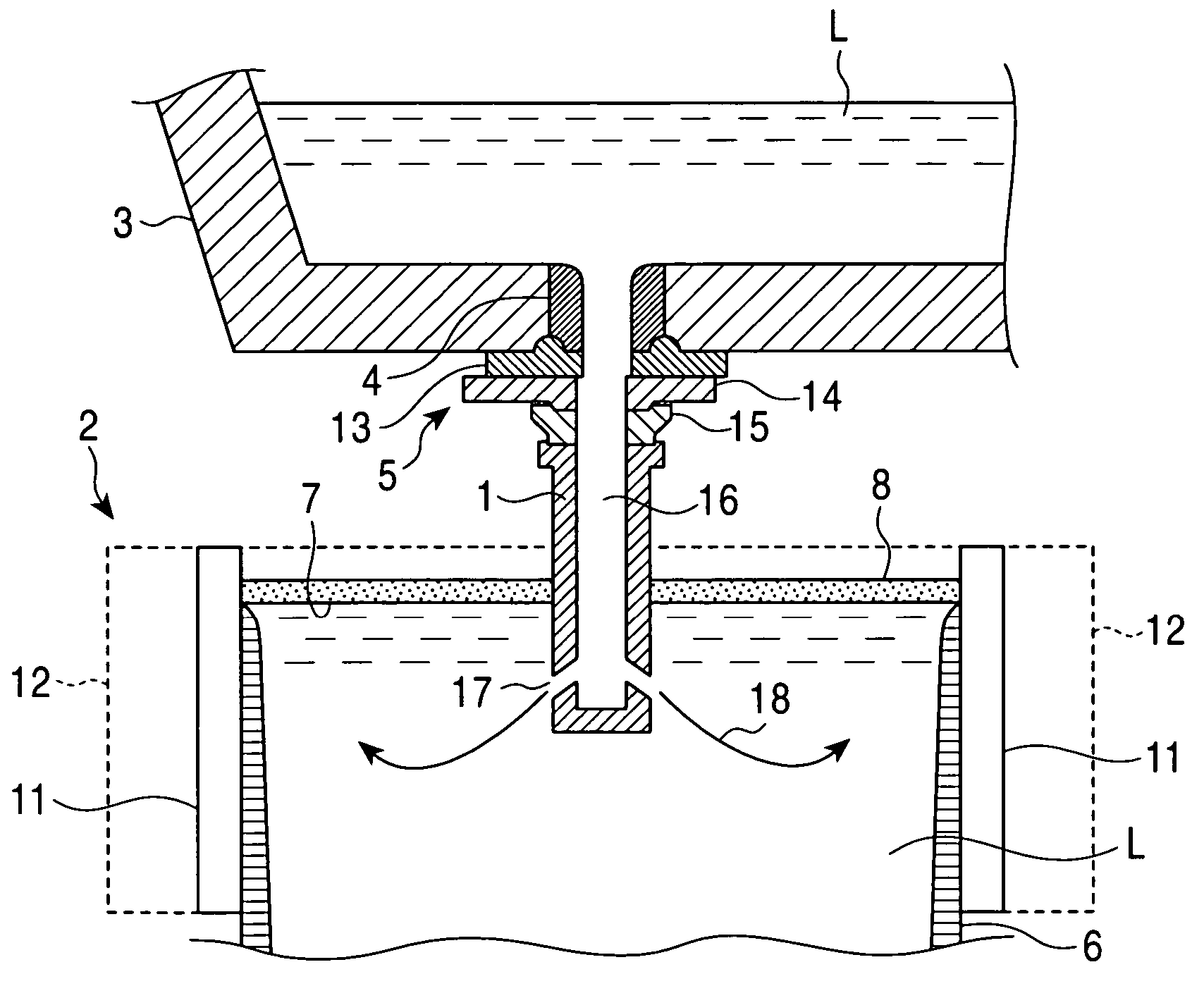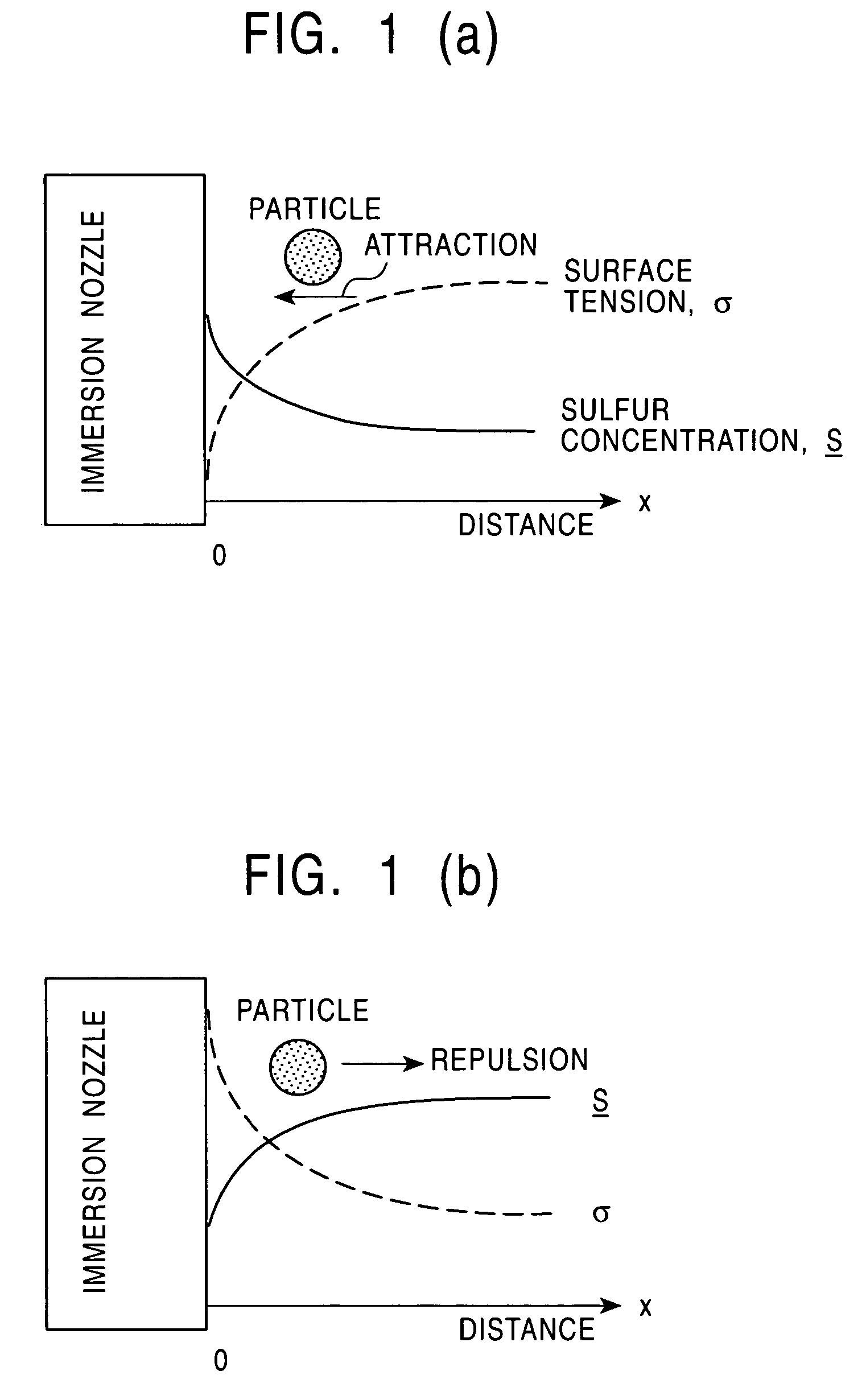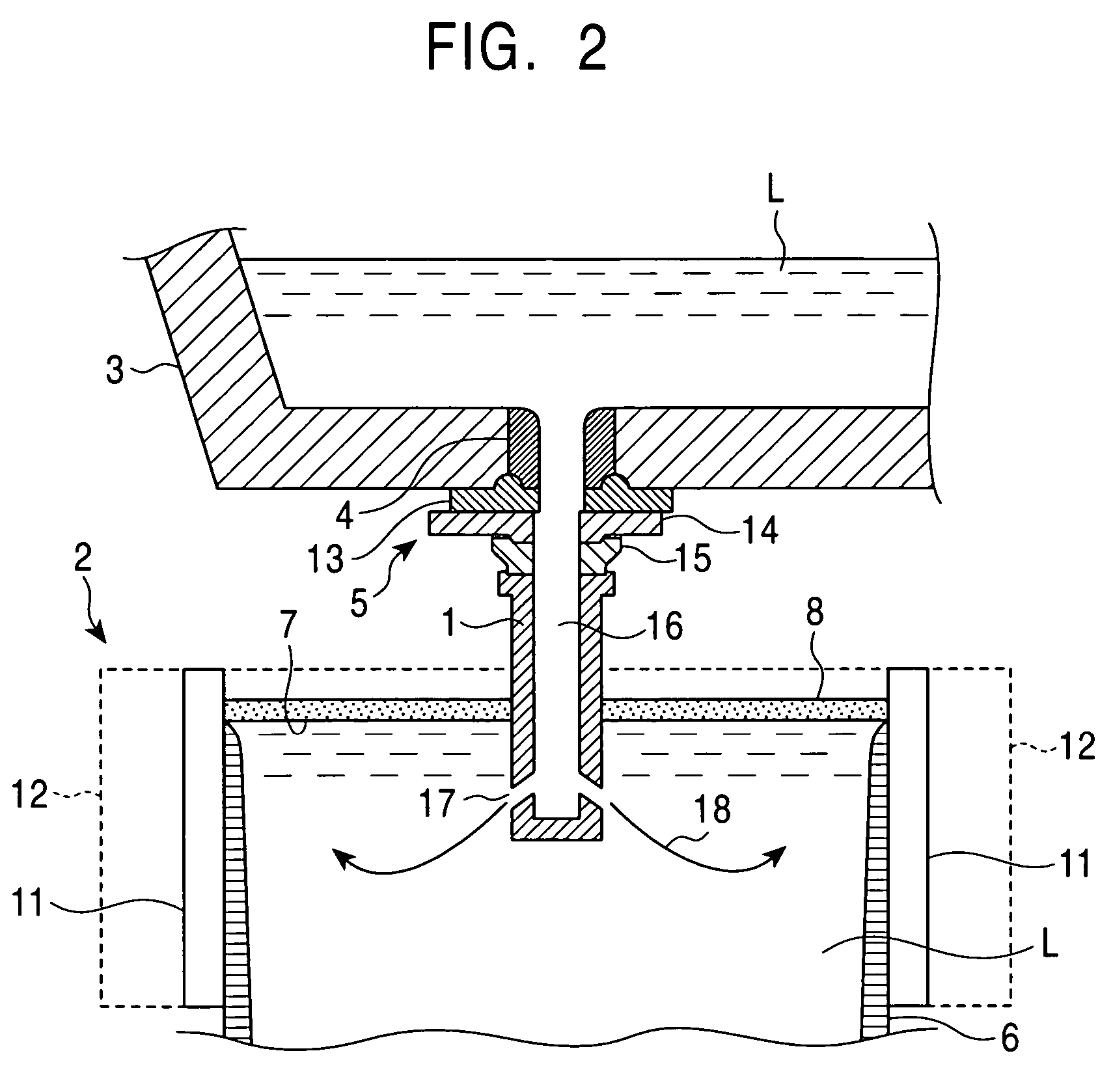Immersion nozzle for continuous casting of steel and method of continuous casting method of steel
a technology of continuous casting and immersion nozzle, which is applied in the direction of molten metal supply equipment, melt-holding vessels, manufacturing tools, etc., can solve the problems of difficulty in completely removing alsub>2, blocking of immersion nozzle, and various problems relating to casting operations and quality of cast steel strands
- Summary
- Abstract
- Description
- Claims
- Application Information
AI Technical Summary
Benefits of technology
Problems solved by technology
Method used
Image
Examples
example 1
[0106]At least one metal selected from the group consisting of Al, Ti, Zr, Ce, and Ca, which was a component of reducing MgO, was compounded with a refractory material including an oxide containing MgO, thereby forming various refractory compositions indicated by Nos. 1 to 19 shown in Table 1. The refractory compositions thus formed were each used as the refractory 22 shown in FIG. 3 or 4, and were formed into immersion nozzles having the shapes shown in FIG. 3 or 4. By using the immersion nozzles thus formed, continuous casting of molten steel was performed using the continuous casting machine shown in FIG. 2. In the case of the insertion type immersion nozzle shown in FIG. 4, an Al2O3-graphite base refractory was used as a mother refractory which was provided around the outside periphery of the immersion nozzle. In addition, for purposes of comparison, casting was also performed using an immersion nozzle made of a conventional Al2O3-graphite base refractory indicated by Nos. 20 an...
example 2
[0111]As shown in Table 2, No. 22 having the same composition as that of No. 1 shown in Table 1 was regarded as a basic composition, and by using refractories having compositions of Nos. 23 to 26, each having the basic composition described above and CaO contained therein, as the refractory 22 shown in FIG. 4, the insertion type immersion nozzle shown in FIG. 4 was formed. Subsequently, by using this immersion nozzle, molten steel was processed by continuous casting using the continuous casting machine shown in FIG. 2.
[0112]After 8 heats, in which 300 ton was per one heat, were continuously processed by casting, the immersion nozzle used in this process was recovered, and deposits on the inner wall right above the discharge hole and the state of the immersion nozzle were observed. The type of cast steel was low-carbon aluminum-killed steel (C: 0.04 to 0.05 mass percent, Si: trace, Mn: 0.1 to 0.2 mass percent, and Al: 0.03 to 0.04 mass percent), and the slab width was in the range of...
example 3
[0116]A continuous casting machine (two-strand type machine) having the mold portion as shown in FIG. 2 was used, and for one strand, the immersion nozzle of the present invention was used. That is, in the immersion nozzle mentioned above, as shown in FIG. 7, a refractory composed of an MgO-carbon-Al metal base material containing Al2O3 and CaO was lined at the inside hole side including the discharge hole, and the outside thereof was supported by an Al2O3-graphite base refractory. As the refractory composed of an MgO-carbon-Al metal base material containing Al2O3 and CaO, of the present invention, a material was used which was composed of 25 mass percent of powdered Al2O3, 5 mass percent of powdered CaO, and a mixture obtained by mixing a powdered magnesia clinker having a particle diameter of 3 mm or less, powdered carbon having a particle diameter of 0.5 mm or less, and a powdered Al metal having a particle diameter of 0.1 to 3 mm at a mixing ratio of 4:2:1. First, MgO, graphite,...
PUM
 Login to View More
Login to View More Abstract
Description
Claims
Application Information
 Login to View More
Login to View More - R&D
- Intellectual Property
- Life Sciences
- Materials
- Tech Scout
- Unparalleled Data Quality
- Higher Quality Content
- 60% Fewer Hallucinations
Browse by: Latest US Patents, China's latest patents, Technical Efficacy Thesaurus, Application Domain, Technology Topic, Popular Technical Reports.
© 2025 PatSnap. All rights reserved.Legal|Privacy policy|Modern Slavery Act Transparency Statement|Sitemap|About US| Contact US: help@patsnap.com



